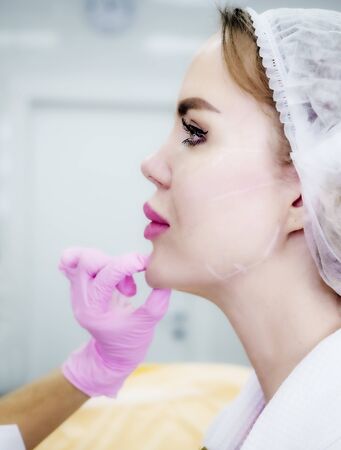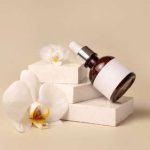1. Using the Wrong Ingredients
When making DIY face masks, it’s important to remember that not all natural ingredients are safe for your skin. Some common household items may cause irritation, allergic reactions, or even long-term damage. Just because something is edible doesn’t mean it’s suitable for skincare.
Ingredients to Be Cautious With
Certain ingredients might seem beneficial but can actually harm your skin. Here are some commonly used DIY mask ingredients and their potential risks:
| Ingredient | Potential Risk |
|---|---|
| Lemon Juice | Highly acidic, can cause burns and increase sun sensitivity |
| Baking Soda | Disrupts skin’s pH balance, leading to dryness and irritation |
| Cinnamon | Can cause severe irritation, redness, and allergic reactions |
| Toothpaste | Contains harsh chemicals that can overly dry and irritate the skin |
| Raw Egg Whites | Presents a risk of bacterial infection if applied to broken skin |
The Importance of Patch Testing
No matter how safe an ingredient seems, always perform a patch test before applying it to your face. Here’s how you can do it:
- Select a small area: Apply a tiny amount of the mixture on your inner wrist or behind your ear.
- Wait 24 hours: Monitor for any signs of redness, itching, or irritation.
- If no reaction occurs: It should be safe to use on your face. If irritation appears, avoid using that ingredient.
Choosing Skin-Friendly Alternatives
If youre looking for safe and effective DIY mask ingredients, consider these gentle options instead:
- Aloe Vera: Soothes and hydrates sensitive skin.
- Coconut Oil: Moisturizes without clogging pores (best for dry skin).
- Avena Sativa (Oatmeal): Calms inflammation and gently exfoliates.
- Honey: Has antibacterial properties and helps retain moisture.
- Cucumber: Refreshes and reduces puffiness.
Avoiding harmful ingredients and taking the time to research can help you create effective DIY face masks without risking damage to your skin. Always prioritize safety over trends!
2. Skipping a Patch Test
Even natural ingredients can cause unexpected reactions. Just because something is organic or plant-based doesn’t mean it’s safe for everyone. Some ingredients may cause irritation, redness, or even allergic reactions, especially if you have sensitive skin.
Why a Patch Test Matters
A patch test helps you determine if your DIY face mask will cause any adverse reactions before applying it to your entire face. This simple step can save you from discomfort and potential skin damage.
How to Do a Patch Test
- Choose a small, discreet area of skin, like the inside of your wrist or behind your ear.
- Apply a small amount of the DIY mask and let it sit for at least 24 hours.
- If you experience redness, itching, burning, or irritation, do not use the mask on your face.
- If there’s no reaction, it should be safe to apply to your face.
Common Ingredients That May Cause Reactions
| Ingredient | Potential Reaction |
|---|---|
| Lemon Juice | Skin sensitivity, irritation, increased sun sensitivity |
| Baking Soda | Dried-out skin, irritation, pH imbalance |
| Cinnamon | Burning sensation, redness, allergic reaction |
| Essential Oils (Tea Tree, Peppermint) | Irritation, allergic reaction, burning sensation |
| Aloe Vera (if allergic) | Mild to severe irritation, rash |
Troubleshooting a Reaction
If you notice any irritation after using a DIY mask:
- Wash off immediately: Use lukewarm water and a gentle cleanser.
- Soothe the skin: Apply aloe vera gel or a fragrance-free moisturizer.
- Avoid further irritation: Skip exfoliating or using harsh skincare products for a few days.
- If symptoms persist: Consult a dermatologist.
![]()
3. Not Considering Skin Type
Different skin types require different ingredients. Using the wrong ones can lead to dryness, excess oil production, or breakouts. Before making a DIY face mask, its essential to understand your skin type and choose ingredients that cater to its specific needs.
How to Identify Your Skin Type
If youre unsure about your skin type, heres a simple guide:
| Skin Type | Characteristics |
|---|---|
| Oily | Shiny appearance, enlarged pores, prone to acne and blackheads |
| Dry | Tightness, flakiness, rough texture, dull look |
| Combination | Oily T-zone (forehead, nose, chin) with dry or normal cheeks |
| Sensitive | Easily irritated, redness, burning or itching sensation |
| Normal | Balanced moisture levels, minimal imperfections, smooth texture |
The Right Ingredients for Your Skin Type
Selecting the appropriate ingredients can make a huge difference in how effective your DIY face mask is. Here are some recommended options:
| Skin Type | Best Ingredients | Avoid These Ingredients |
|---|---|---|
| Oily | Bentonite clay, tea tree oil, honey, aloe vera | Coconut oil, heavy creams, artificial fragrances |
| Dry | Aloe vera, avocado, yogurt, honey, oatmeal | Lemon juice, apple cider vinegar, alcohol-based ingredients |
| Combination | Aloe vera, green tea, jojoba oil, oatmeal | Coconut oil (can clog pores in oily areas), harsh exfoliants |
| Sensitive | Cucumber, chamomile tea, oatmeal, honey | Lemon juice, baking soda, strong essential oils like peppermint or eucalyptus |
| Normal | Aloe vera, honey, yogurt, rose water | No major restrictions—just avoid known allergens or irritants for your skin. |
Avoiding Common Mistakes When Choosing Ingredients
- Patching before applying: Always do a patch test before using a new ingredient to prevent allergic reactions.
- Avoiding overly harsh exfoliation: Scrubbing too hard or using strong acids can damage the skin barrier.
- Minding natural doesnt always mean safe: Some natural ingredients like lemon juice can be too harsh for certain skin types.
- Keeps masks balanced: Ensure your DIY mask has both hydrating and nourishing components rather than just one type of ingredient.
- Avoid leaving it on too long: Even natural masks can dry out your skin if left on for too long.
The Bottom Line: Customize for Your Skin Needs
No single DIY face mask works for everyone. Understanding your skin’s unique characteristics helps you select the right ingredients and avoid irritation or unwanted breakouts. Take time to test and tailor recipes based on what works best for you.
4. Leaving the Mask on for Too Long
More time doesnt always mean better results. Overextending wear time can lead to irritation, dryness, or clogged pores. While it might seem like leaving a DIY face mask on longer will allow your skin to absorb more benefits, it can actually do more harm than good.
Why Timing Matters
Each ingredient in a DIY face mask has its own optimal duration for effectiveness. Leaving a mask on past its recommended time can cause unnecessary stress to your skin. Here’s how different types of masks react when left on too long:
| Type of Mask | Potential Issues When Left On Too Long |
|---|---|
| Clay-Based Masks | Can overly dry out the skin, leading to irritation and flakiness. |
| Honey or Yogurt Masks | Might cause stickiness, clogged pores, or excessive moisture retention. |
| Citrus-Based Masks | Can increase sensitivity to sunlight and cause redness or burning. |
| Aloe Vera or Hydrating Masks | If left too long, they may dry up on the skin, reducing their soothing effects. |
The Right Way to Time Your Face Mask
A general rule of thumb is to follow the recommended time based on the ingredients youre using. Typically:
- Clay masks: 10-15 minutes max
- Cream or hydrating masks: 15-20 minutes
- Nourishing masks with honey/yogurt: 10-20 minutes
- Citrus-based masks: No more than 10 minutes
Avoiding Common Mistakes
If you feel tightness, tingling, or excessive dryness after using a DIY mask, chances are youve left it on too long. Always rinse off your mask with lukewarm water before it starts to harden completely (for clay masks) or before it dries up entirely (for hydrating masks). Follow up with a gentle moisturizer to restore hydration and maintain balance.
5. Using Contaminated or Expired Ingredients
When making DIY face masks, its important to use fresh and properly stored ingredients. Bacteria and mold can grow in homemade masks if ingredients are old or improperly stored, leading to potential skin infections. To ensure your mask is safe to use, always check the quality of your ingredients before applying them to your skin.
Why Expired Ingredients Are a Problem
Many natural ingredients used in DIY face masks, such as yogurt, honey, or fruit, have expiration dates. Using expired products can introduce harmful bacteria to your skin, potentially causing irritation, breakouts, or even infections.
Signs That Your Ingredients Have Gone Bad
| Ingredient | Signs of Spoilage |
|---|---|
| Dairy (Yogurt, Milk) | Sour smell, curdling, mold growth |
| Honey | Crystallization is normal, but mold or fermentation indicates spoilage |
| Fruits (Banana, Avocado) | Browning is normal, but mold or foul odor means they should be discarded |
| Aloe Vera Gel | Color change, odd smell, separation of liquid |
The Importance of Proper Storage
If you store ingredients incorrectly, they may spoil faster. Keep perishable items like dairy and fresh fruits in the refrigerator. Dry ingredients such as oats or clay powders should be kept in airtight containers away from moisture.
Best Storage Practices for Common DIY Mask Ingredients
- Dairy-based ingredients: Store in the fridge and use before the expiration date.
- Fresh fruits and vegetables: Keep refrigerated and discard at the first sign of spoilage.
- Aloe vera gel: If store-bought, follow label instructions; if fresh, keep it in an airtight container in the fridge.
- Dried ingredients (oats, clay powder): Store in a cool, dry place away from direct sunlight.
Avoiding Cross-Contamination
Even fresh ingredients can become contaminated if not handled properly. Always wash your hands before preparing a DIY face mask. Use clean utensils and containers to mix your ingredients instead of dipping fingers directly into the mixture.
Tips to Prevent Contamination:
- Use clean bowls and spoons: Avoid introducing bacteria into your mask by ensuring all tools are sanitized.
- Avoid double-dipping: If youre using a homemade mask over multiple days, scoop out only what you need instead of dipping into the entire batch repeatedly.
- Store leftovers properly: If your DIY mask recipe makes extra product, refrigerate it in a sealed container and use it within a day or two.
Taking these precautions will help you create safe and effective DIY face masks that nourish your skin without unwanted side effects.


